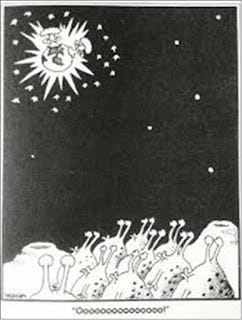Amalie Robert Estate Harvest After Action Report: Vintage 2020 Creates a Vacuum & Our Vintage Statement
Hello and Welcome,
This is the Amalie Robert Estate Harvest After Action Report: Vintage 2020 Creates a Vacuum and Our Vintage Statement. A FLOG communication(Farming bLOG) from Dena & Ernie @AmalieRobert. Oregon Willamette Valley Pinot Noir.

There will certainly be less top tier, premium wine produced in fire and smoke affected areas of the West Coast winegrowing regions this year. This will impact several sectors of the wine trade from vineyard owners and harvest workers, wineries and their suppliers including barrel coopers and glass vendors, all wine distribution channels, Federal and State excise taxes, and of course the people that ultimately enable the entire wine industry - the wine consumer. Something for everyone really (except the fruit flies), misery loves company. Quite a vacuum indeed, or you could say it sucks.

Every vintage is a battlefield from the agrarian point of view. The off season starts when harvest is finished. This time is dedicated to renewing the vineyard floor with winter cover crops and vine pruning to greet the new vintage come spring. Meanwhile, below ground are the pocket gophers and voles trying to eat the roots off our vines and girdle their trunks. And of course, the weeds grow all winter long slowly sapping whatever nutrients they can get from the vines’ root zone. In addition to lifting the morning fog, that is how winegrowers start the vintage.

Farm equipment is and has always been the product of necessity and invention. This conjures up images of baling wire and duct tape, along with this phrase, “If it looks stupid, but it works, it’s not stupid.” Whatever it takes to get ‘er done then get back to the barn and fix it up for the next day. The off season sees a fair bit of repairs and maintenance from the astute winegrower to prevent downtime during the growing season when there simply is “no extra time.” The concept is akin to “no extra money” which becomes relevant when the tractor repair bill shows up.

Ah, but sometime in April spring springs and the vines wake up. Then it is a race to put up catch wires to control the explosive growth of leaves and shoots that the vines will need to ripen their seeds and reproduce. Yes, it is all about them. Spring into summer is the time the vines need a helping hand getting all of this done. Vineyard laborers spend about 3 to 4 minutes per vine over the course of 3 visits spanning about 5 weeks. Yes, Pinot Noir vines are high maintenance.
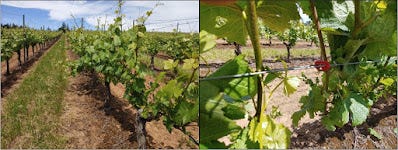

June brings us flowering. This is the first real sign that the vintage is in play. Depending on the weather, the flowers will pollinate and turn into wine berries. The warmer and dryer the weather, all things being equal, the better chance the flowers will become wine berries. And wine berries are self-pollinating. They do not need bees or other insects to complete their task. They just need a few days of mildly warm weather, a little breeze and be left alone to do their thing. Kind of like they are taking a vacation in the middle of the growing season. And they get an extra day every 4 years to do it.
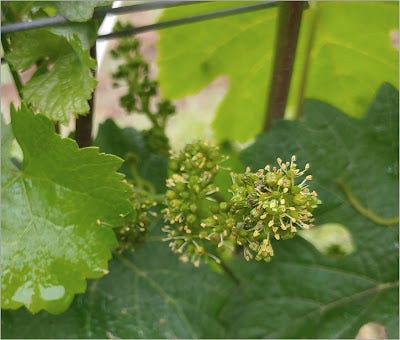
Mildew. Reminds us of Newman from Seinfeld. Even sounds the same – Mildew meet Newman. Here is the first clue that Mother Nature is having you on. Mildew affects grape vine tissues including the shoots, leaves and wee little wine berries. When the temperature and humidity are just right gazillions of little spores are released into the atmosphere from last year’s mildew colonies. This opening salvo starts around May and continues through August.
These spores land on the vines’ shoots, leaves and wine berries and do their level best to establish new colonies. Why do they do this? So they can reproduce and make even more spores. An active mildew infection is not a trivial event. It arrests the wine berry development preventing it from developing aroma and flavor. Left unchecked, mildew will render your wineberries null and void when it comes to the winemaking process. A mildew infection has a tendency to focus the mind.
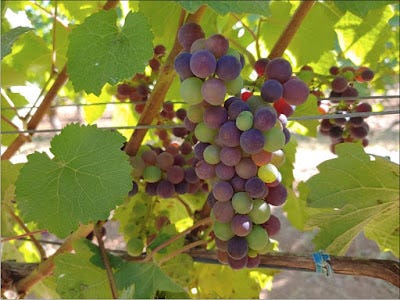
Then along comes August, a turning point in the vintage when the wineberries start to change color from green to mauve to purple, or as we like to call it Pinot Noir en Flagrante. Assuming this is not Botrytis and you have fought back the aforementioned (and uncovered) perils, the birds begin to arrive bringing with them all of their friends and relations. We have bioacoustic controls to deter these winged pests by attracting raptors into OUR environment to interact with THEIR environment. It is a lovely thing to see when these two worlds collide. For the more exposed parts of the vineyard, we go old school and deploy nets.
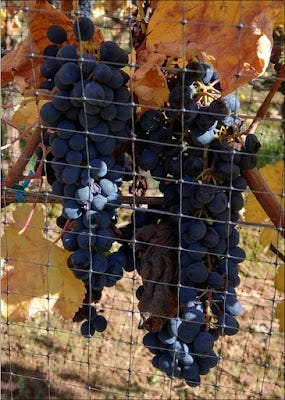
Then we enter September, the wait and worry phase of the winegrowing program. The wine berries have not yet developed the aroma, flavor and texture necessary to be cluster plucked. So, we have to wait for that and worry we will not be affected by some plague or pestilence before we can cluster pluck our bounty. This worry is usually concentrated around Mother Nature’s precipitation schedule, which she refuses to confirm until the night before - usually. If you want a harvest crew, they need confirmation 48 hours in advance - always.
Life is a Beachie Creek fire. And that was our “AH HA” moment when we knew all was for naught. In the finance world, it is known as a sunk cost. That investment of time, money and intellectual capital is gone. Experience is what you get, when you don’t get what you want.
In gambling, which is like farming, you can go “double or nothing.” In farming, you pivot from The Great Cluster Pluck to winter pruning. But since the vines still have all of their leaves (and most of their fruit) you have to wait for it.
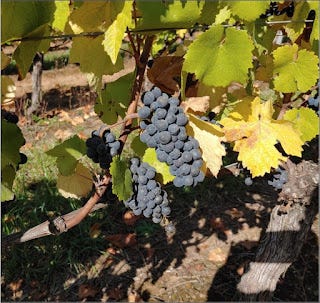
The concept in play for vintage 2020 is nonconforming goods. In a manufacturing environment, you order parts or pre-made assemblies from your suppliers. Upon delivery, the parts are inspected to verify they comply with the purchase order specifications. If they do, they are accepted into the production process flow. If they do not, they are rejected as nonconforming goods.
Most folks have ordered something online over the past few months – maybe even wine. From time to time, there is a mispick in the warehouse. You ordered red towels to go with your kitchen décor, but when you opened the box, you discovered they sent blue ones. Your options are to remodel your kitchen to accommodate the blue towels or reject them and reorder the red ones.
This applies to several industries including the beleaguered restaurants coping with COVID-19. In the farm to table world (which we whole heartedly support), if the tomatoes are underripe at the farmers’ market, then the BLTs are going to have cucumbers or avocados that day, not tomatoes.

Yes, we did make wine. And yes, it smells fine, mostly. Does it have smoke taint? Certainly. Much like the other affliction that is a worldwide phenomenon, you could have it and be asymptomatic. Then one day, you have all of the symptoms. Smoke taint can be masked in a young wine, only to express itself as the wine matures in barrel or bottle. You can treat smoke tainted wine before bottling, there are companies that do that. Then maybe a dilution approach is the answer by blending the affected wine into exceptionally large lots of a “red blend.” A ubiquitous category, at best.
A product recall is the logistical equivalent to the software “edit undo” function and can significantly impact a brand’s reputation. Two examples come to mind on how to execute a product recall. The first is from the hi-tech world when Intel discovered a flaw in their Pentium chip and handled it poorly. The second is when the makers of Tylenol discovered someone had tampered with their product in a retail environment and handled it exceptionally well.
In vintage 2020 a recalled wine means someone knew, or should have known, of a tainted product and went forward with a release. The Ford Pinto is a case in point of what NOT to do when in doubt. They chose very poorly and achieved a catastrophic result.
And yes, we considered other options to convert wine berries into alcohol. Mostly at increased costs with little to no expectation of finding a market for whatever alcohol-based product you have produced. But is it wine? By definition it could be. Or it could be distilled into a smoky brandy. Highly unlikely to give Lagavulin a run for its money. Scotch is a peaty smoky experience - on purpose. We concluded that perhaps this vintage is destined for its last best social purpose as hand sanitizer.
Cuvée de Bovine. But maybe the step just before the last best social purpose of a fermented alcohol product is food. We found a rancher who was interested in a little Pinot Noir for his herd. Well, why not? Maybe someday a nice dish of beef bourguignon will find its way onto our dinner table.

Click on the Cows to watch Beef Bourguignon on the Hoof.
Amalie Robert Estate Vintage 2020 Statement.
We have chosen to involuntarily withdraw from vintage 2020. We live on our vineyard property and bore firsthand witness to the smoke event that spanned September 7ththough the 16th. The intensity, duration and physical impact on our vines is undeniable.
Our underlying philosophy is to express the purity of our site through the unique characteristics of the vintage. We ferment with whole clusters, indigenous yeast and barrel age our wines for 18-24 months. We bottle without the addition of fining agents such as egg whites and we do not filter or otherwise manipulate our wines before bottling. We are 100% estate grown.
These traditional wine making fundamentals have stood the test of time well before we founded Amalie Robert Estate. They have also served us well for the past 20 years. When we release a bottle of wine you can depend upon our stewardship of the land from vine to bottle and commitment to excellence.
To make smoke taint free wine in vintage 2020 by following our guiding principles was simply not possible. We knew there was no pathway to release a premium quality wine under our name.
These are our choices, and they are the right choices for us. We have high hopes that these fires and the devastation they have caused will provide a strong impetus to better manage our natural resources, including the life sustaining air that all earthbound plants and animals require.
Kindest Regards,
Dena & Ernie
You can read our real time wildfire updates posted to our FLOG (Farming bLOG) here:
September 11, 2020: Special Update: Oregon Wildfires and Potential Harvest Impacts
September 22, 2020: Special Update: Oregon Wildfires II and Wine Implications
October 20, 2020: Amalie RobertEstate Official Statement on Vintage 2020
